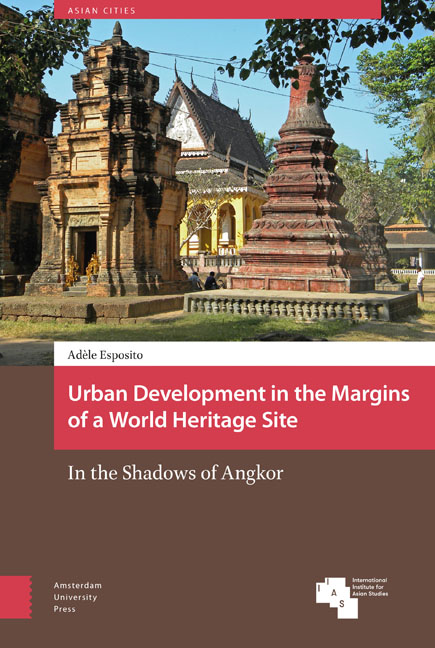Book contents
- Frontmatter
- Dedication
- Contents
- List of Figures
- Abbreviations
- Glossary of Khmer terms
- Acknowledgements
- Author’s Preface
- Introduction
- 1 ‘Before you Build a Wall, Think of What You are Leaving Outside it’: The Construction of Core and Marginal Spaces in the Angkor Region
- 2 The Arena of Urban Planning and the Idea of the City
- 3 The City as Developers’ Playground
- 4 The Architectural Space: How Contemporary Design Shapes Urban Identities and Ideas of Modernity
- Conclusion
- Bibliography
- Index
- Publications / Asian Cities
2 - The Arena of Urban Planning and the Idea of the City
Published online by Cambridge University Press: 16 February 2021
- Frontmatter
- Dedication
- Contents
- List of Figures
- Abbreviations
- Glossary of Khmer terms
- Acknowledgements
- Author’s Preface
- Introduction
- 1 ‘Before you Build a Wall, Think of What You are Leaving Outside it’: The Construction of Core and Marginal Spaces in the Angkor Region
- 2 The Arena of Urban Planning and the Idea of the City
- 3 The City as Developers’ Playground
- 4 The Architectural Space: How Contemporary Design Shapes Urban Identities and Ideas of Modernity
- Conclusion
- Bibliography
- Index
- Publications / Asian Cities
Summary
Siem Reap has been the backdrop of urban imaginings since the early 1990s. Various teams of foreign-sponsored planners have designed what they considered to be the most desirable development path and pattern for a small town that was going to become an international tourism hub. In this chapter, I analyse the politics of urban planning on the doorstep of the archaeological site of Angkor, with a twofold objective: firstly, to examine the ideas, models, and patterns of the tourist centre shaped by planners from different cultural and professional backgrounds; secondly, to explore the social, political, and economic struggles, which eventually led to the abandonment of all the urban plans designed for Siem Reap.
Planners who engage in designing the development of a tourist city face a serious dilemma. As Judd and Fainstein argue, ‘a city that tries to build an economy based on tourism must project itself as a “dreamscape of visual consumption”’ (1999, p. 7). Such a city needs facilities and infrastructures; it needs to modernize and equip its urban environment in order to facilitate consumption, but it also has to maintain a local flavour in order to satisfy the tourists’ quest for the dream of authenticity (MacCannell, 1973; 1976). This twofold programme can be a source of contradiction. Infrastructure projects may endanger the integrity of inherited landscapes; conversely, the maintenance of landscapes may put a brake on the development of the hotel industry and thus limit the influx of tourists. The conservation versus development dilemma is particularly acute in Siem Reap because of its location within a non-heritage space that is largely ignored by the management system for the World Heritage Site of Angkor. Siem Reap is a vulnerable urban environment, as it was built on a rural substrate that is now coveted by the developers who seek to build and speculate. How can this fragile environment be modernized while maintaining an idyllic atmosphere that will attract tourists? Is Siem Reap's urban fabric, with its large cultivated plots and open-air canals, adapted to hosting massive influxes of tourists? What would be the best pattern for the urban development of a provincial town that is supposed to become an international tourism hub?
These are the pressing questions asked by several generations of planners. I use the word ‘generations’ because, over a period of only twenty years, different ideas of the city emerged, supported by successive teams of planners.
- Type
- Chapter
- Information
- Urban Development in the Margins of a World Heritage SiteIn the Shadows of Angkor, pp. 93 - 154Publisher: Amsterdam University PressPrint publication year: 2018



